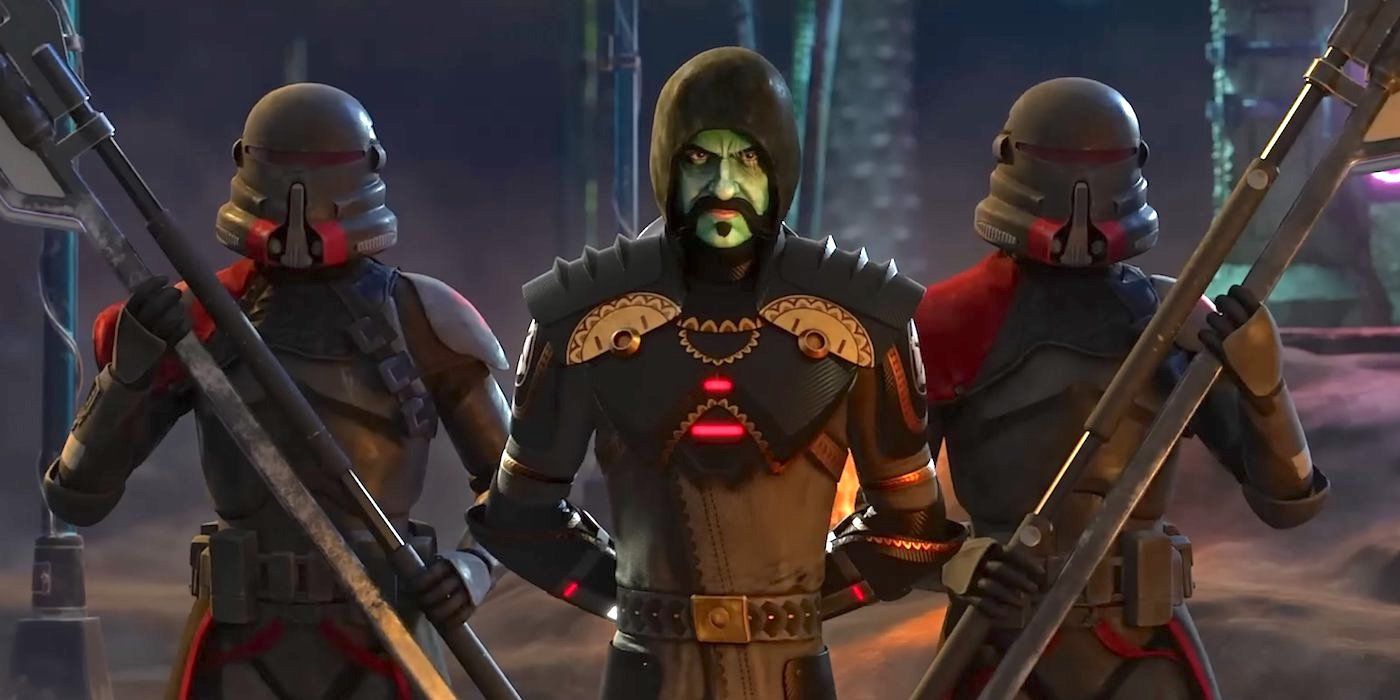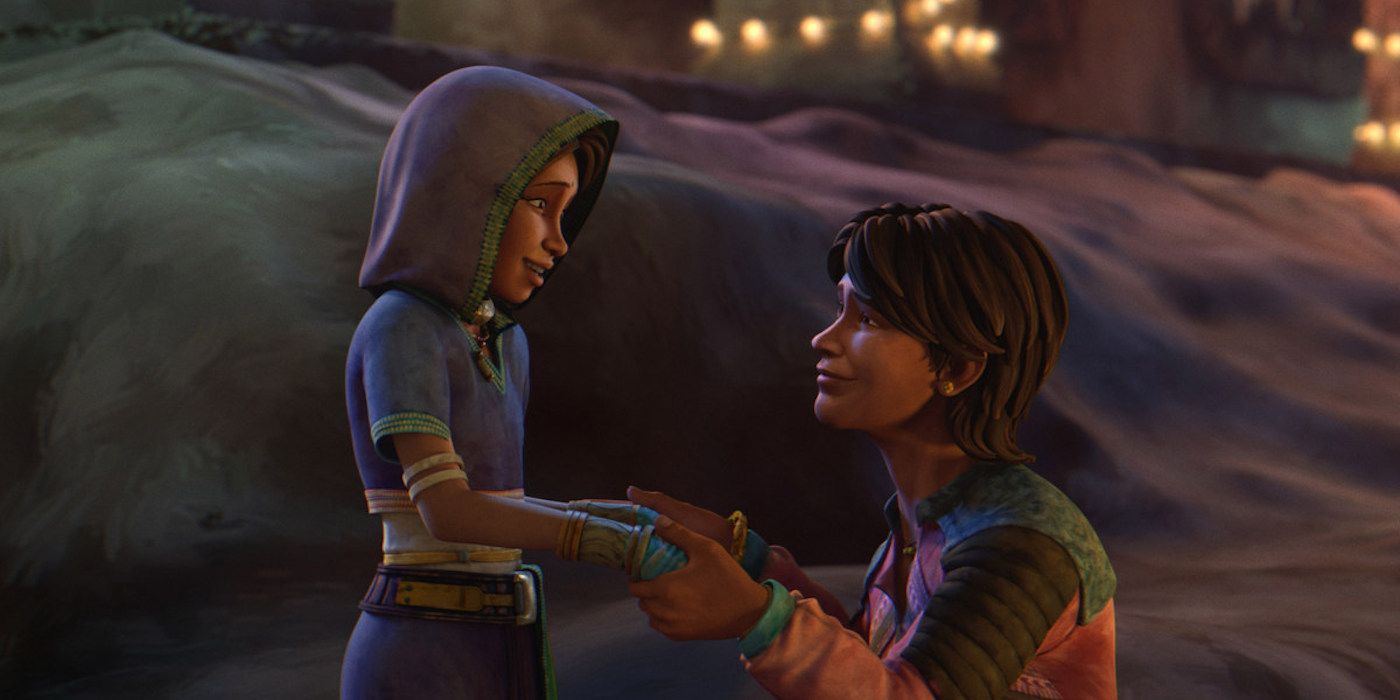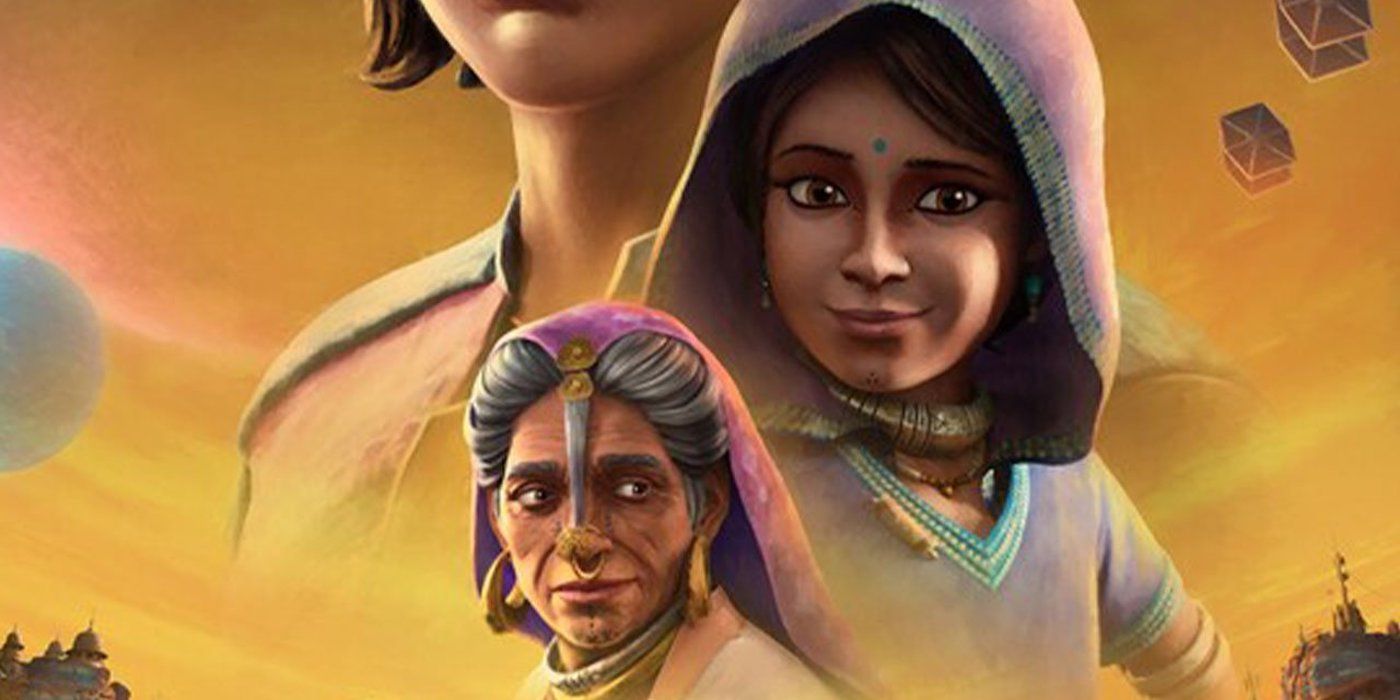The following contains spoilers for Star Wars: Visions Season 2, Episode 7, "The Bandits of Golak," now streaming on Disney+.
One of the most intriguing traits of Star Wars: Visions is how the franchise gets to touch on various cultures. It's more than just representing alien worlds and tribes scattered across the galaxy -- fans get to relate on a grounded level. A prime example is Season 1's "The Duel," which leaned into the way of the samurai, and Season 2's "The Pit" addressing people of color rising against oppression.
It's all about placing societies that fans know into unique landscapes and different Star Wars timelines with a cosmic twist. Interestingly, Season 2 has even more cosmopolitan flair to it as it works in a Bollywood-esque story. This comes in the shape of Episode 7, "The Bandits of Golak." And it once more proves the creative width the anthology has to offer.
The Bandits of Golak Lean Into Bollywood's Nature
In this episode, young Rani is a Force-sensitive teen on Golak being escorted by her brother, Charuk. They meet a Jedi master, Rugal, who defends them from an Inquisitor and his goons. Along the way, Visions ensures each segment is tapered to the style of music that Bollywood legends such as A.R. Rahman and Anu Malik leaned into over the decades.
From the ethereal, shimmery strings of the siblings on the train where Rani uses her power, to the dramatic scene where thugs chase Charuk atop the locomotive, Visions smartly uses instruments such as the sitar and dholak to create a genuine feeling. It's a clever evolution of what John Williams has done for the mainstream series, with Sneha Khanwalkar taking charge of the soundscape.
This direction adds a lot more signature and unique character stamps throughout. It's evident in the quick-tempo Bhangra style on the train shifting to a more folk and flute style at the end. There, the Jedi versus Sith leads to Rugal killing the villain and removing the girl from her brother to train. As Rugal proves to be a powerful Force character now taking on a mentor, the show focuses on subtle instrumentation versus orchestras or choirs.
The Bandits of Golak Creates a Sense of Identity
While most Visions episodes do have distinct visual styles, few lack their own identity. But by giving each segment its own soundscape, it matches the mood of the voice actors and Indian landscape that Mumbai-based 88 Pictures charts. The way the musical style floats between triumphant in battle to sympathetic tragedy when the siblings part reinforces how alive and fluid the story is.
The clothing, building designs, characters' body art, and even the Inquisitor resembling the mythological demon king, Ravana, reiterate how closely the creative team wanted to stick to the culture. It's something Ms. Marvel did as well when dissecting Kamala Khan's Muslim and Pakistani cultures. Admittedly, this approach enhances the finale, with the look, sound and feel accentuating Rugal's words about life and resilience.
This classic Jedi teaching used to recruit the child helps tie into the Hindu philosophy of dharma, too. Even the credit crawl exemplifies this energy, proving Visions is unafraid to truly embrace each and every aspect of another culture. This rich, immersive Bollywood feel is a solid step forward for Star Wars diversity as well. It helps undo some errors made with characters like Finn and Rose. As such, the blend of everything feels like this is a story actually taking place in South Asia rather than on a foreign planet. Ultimately, this creates a personal investment and a deeper emotional connection for those wanting authenticity and true representation.
All episodes of Star Wars: Visions Season 2 are streaming on Disney+.



